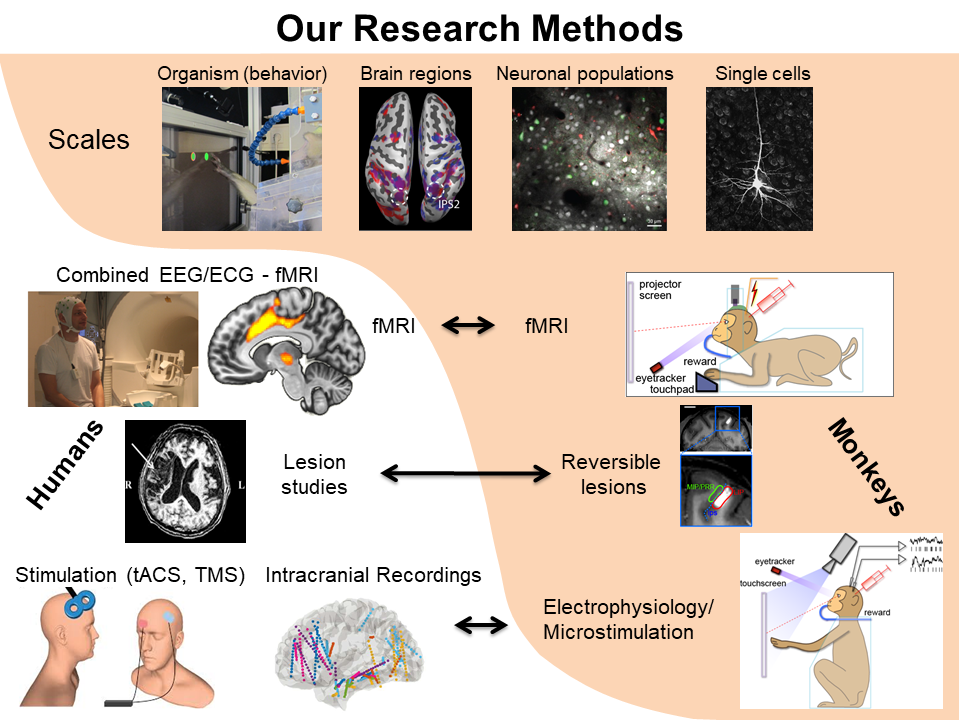Research & Methods
Department of Cognitive Neurology
Topics
The long-term goal of our research program is to understand the neural mechanisms underlying normal and impaired visual awareness and decision making. Projects are addressing two main questions:
- What patterns of activity in the brain accompany the awareness of visual stimuli and what kind of activity is causal, the actual substrate or rather a consequence of conscious perception? A special focus lies on the possible causal influence of neural oscillations in thalamo-cortical circuits on visual perception.
- What are the neural mechanisms underlying deficits and recovery of spatial awareness and visually-guided behavior? In this line of research, we comparatively study the influence of reversible and structural lesions on network activity in non-human primates and in neurological patients, respectively.
In particular, we are employing intracranial recordings, pharmacological inactivation and fMRI in macaque monkeys. In humans, we combine non-invasive brain perturbation methods (tACS, tDCS and TMS) and fMRI in healthy subjects and neurological patients. Our research is aimed at bridging the gap between basic neuroscience and clinical research.

Humans:
Correlative: fMRI, EEG, Psychophysics including eye and hand movement tracking
Patient Populations: stroke and Parkinson’s disease, intracranial recordings in epilepsy patients
Stimulation Methods: tASC and TMS (also in combinations with fMRI and EEG)
Monkeys:
Correlative: fMRI, intracranial multielectrode recording (spikes and LFP)
Causal Methods: intracranial stimulation and pharmacological inactivation (also in combination with fMRI and intracranial recordings)
Current Project Grants